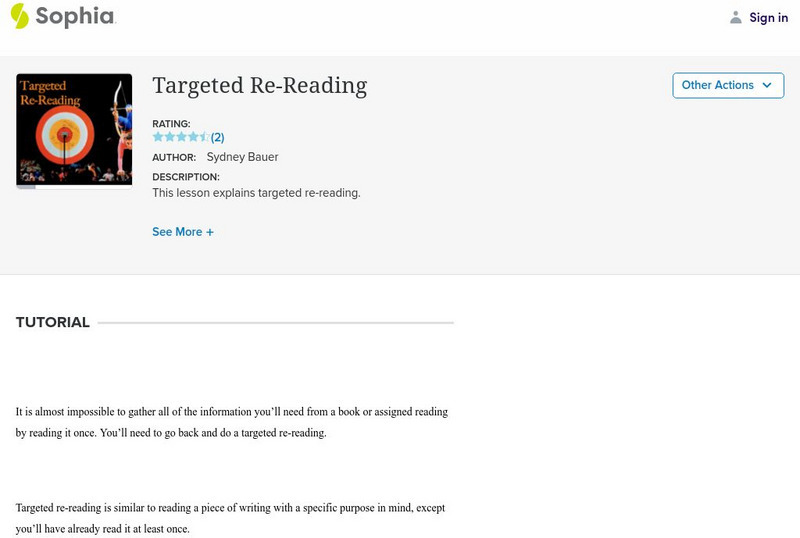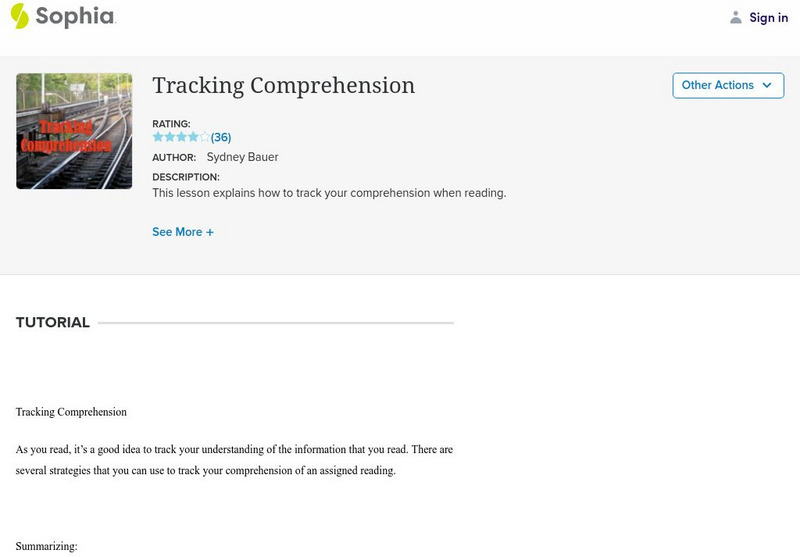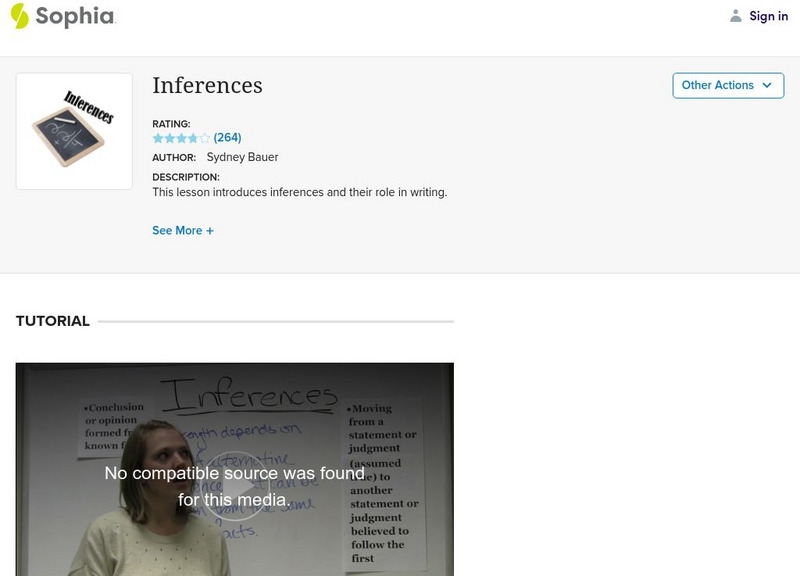Hi, what do you want to do?
TED-Ed
Could We Actually Live on Mars?
What would be the best place to live on Mars? A fascinating look at the geographical of Mars is sure to intrigue the future astronomers in your middle or high school class. A short video introduces learners to the different...
Lesson Planet
EdTech Tuesday: NewsBug
Here is a great sneak peek into the NewsBug app, which curates news stories and images appropriate for classroom use and is free from social media connections and in-app purchases.
PBS
Tropism and Dormancy | UNC-TV Science
Since plants can't move to a better environment, they have their own way of dealing with less-than-ideal conditions. A quick animation provides learners with an overview of the strategies plants use to adapt within their environments....
PBS
Top 4 Tips to Spot Bad Science Reporting
How can people make good decisions about their health when modern news reporting is so unreliable? Using an informative video resource, viewers discover the acronym GLAD. They learn to get past the clickbait, look for crazy claims,...
PBS
Why Do Our Brains Love Fake News?
Fake news is all about the dorsolateral prefrontal cortex versus the orbitofrontal cortex. Huh? Get the facts, the real deal, with a short video that explains clearly and succinctly what's going on in our brains that leads us to listen...
PBS
Documenting the Dust Bowl
Paul Taylor's interviews and Dorothea Lange's photographs bring to life the unimaginable devastation of the Dust Bowl. After watching a short video from PBS, viewers are asked to imagine how they would react, whether they would stay or...
British Council
William Shakespeare
After watching a three-minute video detailing the life of William Shakespeare, scholars take part in several activities designed to show what they know about the famous writer. Learners read a series of eight sentences and put them in...
PBS
The Pilgrims: European Plague in Native New England, 1616-1619
Before the Pilgrims' arrival to New England, a vicious plague swept across New England and wiped out over 50% of the Native American people from Maine to Massachusetts. Watch a video that examines this devastation and the role it played...
PBS
The Pilgrims: Mayflower Compact
What was the Mayflower Compact? Watch a video that explains the purpose of coming to New England on the Mayflower and the social compact that bound the Pilgrims to the government and laws that would be created in the new land.
Crash Course Kids
Star Personalities
Reach for the stars with a fun space science video! Viewers learn about the different types of stars in the galaxy, as well as the ways to organize and classify them based on color and age.
TED-Ed
How a Few Scientists Transformed the Way We Think About Disease
During the first few sniffles of a cold, you can't help wondering where you picked up the illness. Watch an Ed Ted video that details the difference between miasma theory and germ theory, and the ways that Dr. John Snow's research...
TED-Ed
Why is Bread Fluffy, Vinegar Sour, and Swiss Cheese Holey?
The gourmands and foodies in your class will love this gastronomical video! Educational and entertaining, the video explains the natural and added microorganisms that occur with food production, including yeast in bread, carbonation in...
TED-Ed
The race to sequence the human genome
The world of genetics and DNA is much clearer than it was 25 years ago, in large part due to the success of the Human Genome Project. Watch a short, engaging video about the dueling organizations who raced to be the first to sequence the...
TED-Ed
How Do Solar Panels Work?
What are those shiny things that people are installing on the roofs of their houses? Learn about the structure, function, and logistics of solar panels, as well as the challenges of using the sun's energy as our exclusive power source on...
TED-Ed
How does anesthesia work?
Many people know the feeling of counting backward from 100 before a surgical procedure begins, but what actually happens between number 99 and waking up after surgery? Watch a short video about the different types of anesthesia, the...
Sophia Learning
Sophia: Targeted Re Reading
This lesson defines and explains how to do targeted re-reading and provides two literary examples. It offers this information in both text and audio formats.
Sophia Learning
Sophia: Tracking Comprehension
This lesson focuses on strategies for tracking comprehension while reading. It provides three main strategies: summarizing, chunking, and glossing. It explains each in step-by-step fashion using both text and audio.
eSpark Learning
E Spark Learning: Textual Evidence Instructional Video (7.R1.1)
This video shows an example of how to draw conclusions from an informative text and back it up with evidence from the text. [6:02]
PBS
Pbs Learning Media: Objectifying the Text: Conversations in Literature
See how effective readers utilize literary elements and allusions to critically analyze a text in this one-hour video Objectifying the Text. A group of nine experienced educators examine the process of envisionment building as they...
Annenberg Foundation
Annenberg Learner: Conversations in Literature
A series of 8 instructional videos, each about 60 minutes in length, designed to model effective reading habits through envisionment building. Topics include Responding As Readers, Envisioning, Stepping In, Moving Through, Rethinking,...
Sophia Learning
Sophia: Inferences
This video lesson focuses on inferences including the definition, how to determine the strength of an inference, and the role of inferences in writing. [5:47] RL.9-10.1, RL. 11-12, RI.9-10.1, RI.11-12.1 textual evidence and inferences
Imagine Learning Classroom
Learn Zillion: Determine a Character's Traits by Examining Evidence From the Text
In this lesson, you will learn how to determine a character's traits by examining his/her actions across a text. Login gives access to a slideshow and a student handout. [9:00]
Sophia Learning
Sophia: Starting With the Text
This lesson offers reasons why some students prefer to read the text before reading the questions when asked to answer questions. It offers this information in text and audio formats.
Curated Video
You Tube: Making Inferences
Catchy song by Jake Scott that explains how to infer and use textual evidence to support your conclusions. [2:36]




























